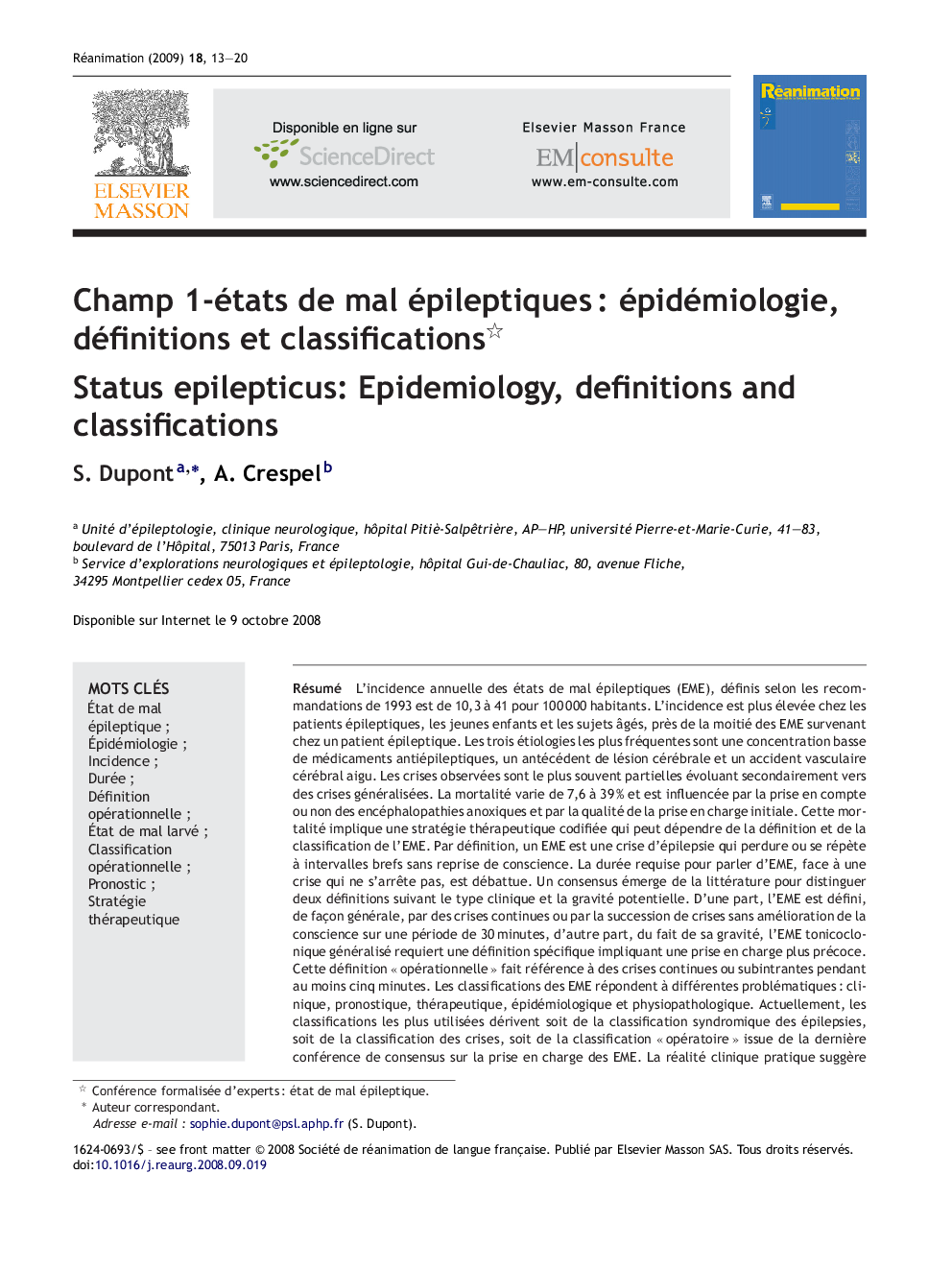| کد مقاله | کد نشریه | سال انتشار | مقاله انگلیسی | نسخه تمام متن |
|---|---|---|---|---|
| 2613661 | 1134899 | 2009 | 8 صفحه PDF | دانلود رایگان |
عنوان انگلیسی مقاله ISI
Champ 1-états de mal épileptiques : épidémiologie, définitions et classifications
دانلود مقاله + سفارش ترجمه
دانلود مقاله ISI انگلیسی
رایگان برای ایرانیان
کلمات کلیدی
Therapeutic strategy - استراتژی درمانیstratégie thérapeutique - استراتژی درمانیEpidemiology - اپیدمیولوژی(همهگیرشناسی)status epilepticus - بحران صرعی یا صرع پایدارIncidence - بروز Operational definition - تعریف عملیاتیÉtat de mal épileptique - صرع وضعیتClassification - طبقه بندیDurée - مدتDuration - مدت زمانÉpidémiologie - همهگیرشناسیPronostic - پیش بینیprognosis - پیش شناخت بیماری
موضوعات مرتبط
علوم پزشکی و سلامت
پزشکی و دندانپزشکی
طب اورژانس
پیش نمایش صفحه اول مقاله

چکیده انگلیسی
The annual incidence of status epilepticus (SE) based on the definition of the International Ligue Against Epilepsy (1993) ranges from 10.3 to 41 per 100,000 inhabitants. Half of the SE occur in epileptic patients. In all published studies, SE incidence is higher in epileptic patients, young children, and the elderly. SE recurrence is estimated at 13% during the first two years. The three main etiologies include a low concentration of anticonvulsive drugs, a past cerebral injury, and an acute stroke. Seizures are generalized in 9 to 33% and focal in 25 to 75% of the cases. Secondary generalized seizures may be observed in 19 to 66% of the cases. Mortality ranges from 7.6 to 39% according to the inclusion or not of postanoxic encephalopathies as well as differences in initial patient management. Mortality rate is influenced by the SE definition and classification. SE definition is based on the existence of a prolonged seizure or a series of seizures during which the patient has no or incomplete recuperation of consciousness. The duration parameter to distinguish between a SE and a seizure remains controversial. To date, a consensus in the literature distinguishes two definitions based on different durations according to the SE clinical type and potential severity. Firstly, SE is defined as a seizure lasting more than 30Â minutes or recurrent seizures without recovering of consciousness over a period of 30Â minutes. Secondly, considering its severity, tonic-clonic SE requires a specific definition that results in a more rapid patient management. This operational definition is one continuous, generalized, convulsive seizure lasting more than five minutes or two or more seizures during which the patient does not return to baseline consciousness. SE classification may be based on different backgrounds, including clinical, prognostic, therapeutic, epidemiological as well as physiopathological bases. To date, the most common SE classifications derive from the syndromic epileptic classification, the seizure classification or the classification proposed by the French consensus conference. For clinical practice, an operational classification focused on therapeutic strategies adapted to prognosis should be preferred.
ناشر
Database: Elsevier - ScienceDirect (ساینس دایرکت)
Journal: Réanimation - Volume 18, Issue 1, January 2009, Pages 13-20
Journal: Réanimation - Volume 18, Issue 1, January 2009, Pages 13-20
نویسندگان
S. Dupont, A. Crespel,